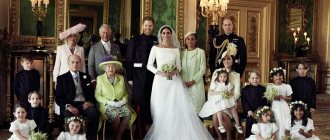Freddie Mercury's name is not real, the singer's name is Farrukh Bulsara. He is also remembered by his fans as a songwriter, and, of course, as the vocalist of the cult rock band Queen. One of the achievements of this man is that in 2002 he was awarded 58th place in the list of the hundred greatest Britons. In general, during his life he received many awards and prizes. What was Freddie Mercury like? The biography and personal life of the singer do not leave his fans indifferent.
Childhood and youth
What was Freddie Mercury like? The biography says that he was born on September 5, 1946 in Stone Town. The singer died on November 24, 1991. But everything is in order. Where are Freddie Mercury's roots? His nationality is Parsi. The parents' names were Jer and Bomi Bulsara. The newborn child was named Farrukh, which translated means “happiness.” When the boy was six years old, his sister Kashmira was born. The head of the family worked as a cashier at the Supreme Court.
In 1954, the parents sent their son to St. Peter's School, located half a kilometer from Bombay. What kind of student was Freddie Mercury? His biography tells that during his studies the boy began to get involved in music, thanks to the singer Lata Mangeshkar. In Panchgan, the guy lived with his uncle and aunt. His real name was difficult for his peers to pronounce, and then they started calling him Freddie. Since then this name has become attached to him. After some thought, the singer took this pseudonym for himself.
All disciplines taught at the school were exclusively British. The guy was most interested in sports such as sprinting, boxing and hockey. But he did not like activities such as running and cricket. This man excelled in sports while at school. At the age of ten he was recognized as the champion among schoolchildren in tennis, and two years later he received a cup for all-around. When he was 12 years old, the director of the educational institution presented Freddie with a certificate for success in the arts and sciences.
Despite his busy schedule, he excelled in his studies. This is what the future singer did during his school years:
- performed with the choir;
- drew;
- wrote scripts and participated in performances;
- I studied successfully.
But most of all he was interested in music. It was this activity that the boy devoted his childhood to. I also remember cases where this hobby was to the detriment of studies. The school director was the first to notice that the guy had talent. Then he wrote an appeal to his parents with a proposal that they send their son to study the piano for a nominal fee. The parents were not against it; they also rejoiced at their child’s success. Freddie began learning to play a musical instrument and enjoyed it. The result of his work can be called the fourth degree, both in practice and in theory.
The boy did not sing alone, he had like-minded people. So in 1958, a small company of guys created a musical group that performed rock. It consisted of five people, and its name translated meant “crazy people.” It is worth noting that this is an ideal name for such a team, which was completely justified. But this name did not bother the school administration, and the guys performed at various events.
In 1962, the singer graduated from the educational institution. He was sixteen years old then. That same year he returned to his native Zanzibar. But in 1964, the country in which the family lived underwent serious political changes. The Arab sultan began to rule Zanzibar. And then the family packed up in a few days and moved to the UK.
Biography of Freddie Mercury
During his school years, Freddie was interested in literature, drawing, sports, and from the age of seven he learned to play the piano.
In 1964, Bulsara's family moved to the UK.
In 1965, Mercury entered Ealing Art College, where he studied painting, design, and was interested in ballet and music. In 1970, he joined fellow student rock band Smile members Brian May and Roger Taylor, replacing his former classmate. With the arrival of bass guitarist John Deacon in 1971, the twenty-year stellar history of the group called Queen began.
In 1972, Freddie took the pseudonym Mercury (English: Mercury, mercury). He played a leading role in shaping the musical concept of the group and was the author of most of the compositions - Bohemian Rhapsody, the lyrical ballad Love Of My Life (both 1975), the song We Are The Champions (1977), which became the anthem of sports fans.
In addition to working in the group, Mercury released several solo discs. His single Love Kills (1984) and album Mr. Bad Guy (1985) was a top ten UK hit, and the single The Great Pretender (1987) was number four.
In 1988, the Barcelona disc was released, on which Mercury performed classic opera arias together with soprano Montserrat Caballe. The single Barcelona became the official anthem of the 1992 Olympics held in Barcelona.
Possessing acting skills, Mercury turned the group's concerts into shows. In addition to his powerful, instantly recognizable voice, he amazed with his emotionality, temperament, plasticity, and avant-garde costumes. Mercury's desire to combine music and theater, light and sound effects was embodied in the creation of the group's video clips. He wrote most of the scripts for the videos and directed their production.
However, a number of the group’s works were condemned for homosexual motives, the video “I Want to Break Free” was especially criticized.
On November 24, 1991, Freddie Mercury died in London. The day before his death, he admitted that he had AIDS. Mercury died of pneumonia caused by AIDS.
It is known that he was cremated at Kensal Green Cemetery, the burial place is unknown.
In 2013, at London's Kensal Green cemetery, Queen fans found a plaque with a dedication, in their opinion, to the musician Freddie Mercury. The inscription on it was dedicated to Farukh Bulsara, and the dates of birth and death also coincided. The appeal is signed with the letter “M” - presumably this is Mary Austin, a close friend of the musician, with whom he lived for about seven years.
On his deathbed, the Queen lead singer bequeathed to her his Kensington mansion on Logan Place, the proceeds from the records sold. In addition, he asked Austin to bury his ashes in a secret place after cremation - he did not want a posthumous pilgrimage of numerous fans to his grave.
Before his death, Mercury also ordered that proceeds from the re-release of Bohemian Rhapsody be donated to the Terrence Higgins AIDS charity.
In 1992, Mercury's Queen colleagues organized a grand concert in memory of the singer at London's Wembley Stadium, which was attended by many famous musicians who performed Mercury's best songs.
Some of Mercury's songs did not see the light of day during the singer's lifetime: they were included in Queen's 1995 album, Made in Heaven.
In the 2000s, Queen resumed their concert activities without their legendary lead singer.
The material was prepared based on information from RIA Novosti and open sources
Path to fame
When the family ended up in England, at first they had to live with relatives in Felthamy, and after some time they bought their own house. Freddie at this time had already become an adult and he wanted to study further, so he entered the Icefort school, where he studied painting. And he really liked this activity.
During these years, the family experienced financial needs, and therefore Freddie, as the eldest son, had to go to work part-time. At first he served at London Airport, then became a loader. Then his colleagues were very surprised that such a young and talented guy was working in such a field. But Freddie justified himself and said that he does this only in his free time, and his profession is a musician. Due to his charm, he was treated with leniency, and some employees performed Freddy's duties.
What was Freddie Mercury like on the way to his popularity? The biography tells us that after graduating from school, in 1966, the guy decided to go to study at an art college located in London. Already in the fall, Freddie entered this institution. After that, he decided to live separately from his parents, and then he and a friend rented an apartment in Kensington. His neighbor was also passionate about music, and so they often held rehearsals, but were in no hurry to appear on stage yet. This city in those days was considered the center of art.
The singer devoted a lot of time to drawing, and most of his creations were addressed to his favorite guitarist, Jimi Hendrix. There the guy found a new friend - Tim Staffel, the leader of the Smile group, as well as an excellent vocalist and guitarist. After some time, Freddie began to be invited to the rehearsals of this group. There he met and began to communicate with other team members and was amazed at what he saw.
In 1969, the guy finished his studies and moved to live with Taylor Roger, with whom they opened a store together that sold Freddie's paintings and other exclusive items.
In the same year, the singer met the group Ibex. He was so interested in her work that after a couple of weeks he already knew everything about her repertoire. And then Freddie added several of his own songs to the existing ones. And at the end of August he already performed with the group on the common stage. He suggested renaming the team, his proposal was appreciated and a new name was invented - Wreckage. But in this composition the group did not last long: one by one the participants left it, and it soon broke up.
And then the guy decided not to stop there. He started looking for a new job for himself. He looked at the advertisements every day and decided to become the lead singer of the band Sour Milk Sea. When Freddie came across this ad, he showed up for an interview that same day and was appointed vocalist. The band members received him well, as his voice was inspiring, and the way he could move amazed everyone. Several rehearsals were held, and then the group began to give their concerts.
Freddie became best friends with Chris, and soon he moved into his apartment. But the rest of the group didn't like their relationship, as they thought it would harm the band's reputation. A few months later the team finally broke up, but it was not Freddie’s fault. It’s just that the person who was the owner of all the equipment took it away, and the group could no longer carry out its activities.
1970-1982
In April 1970, Freddie became the lead singer of the Smile group, as its former vocalist decided to leave the team. At the same time, a new name was invented - Queen. For the group, Freddie began to draw a symbol, the basis for which was the coat of arms of Great Britain. In 1972, while recording another masterpiece, Freddie had the idea of changing his last name. And from that time on he became Freddie Mercury.
Already in 1975, the group began to tour in different countries, including Japan. Most of all, the guys remembered the performance specifically because they were warmly received, which the band members themselves did not expect. Freddie truly fell in love with this country and he dedicated all his works related to painting to it. In 1980, Freddie decided to change his image: he grew a mustache and cut his hair short, which only made him more attractive.
1983-1988
At the end of 1982, the band members decided that they wanted to rest for the upcoming season and not give any more concerts. But Freddie himself was not ready for this. His plans did not include such a long period of inaction. But he was not upset, since he had more time for himself, and decided to work on a solo album, the dream of which he lived for a long period of time.
In 1983, Freddie began working on a solo record and spent a lot of time in the studio. Then he met the most popular composer Giorgio Moreder, who invited Freddie to record a joint score for the film. In September 1984, the song Love Kills was released.
Freddie Mercury released his first album at the end of April 1985.
Montserrat Caballe played a big role in Freddie's life, whose first meeting took place in 1983 and made a strong impression on him. They met for the second time four years later, when Freddie presented the singer with a cassette of his music. Caballe was impressed by Freddie's creation, and that same year they already worked on a joint album.
The date of the singer’s last appearance on stage was October 1988, it was one of the music festivals. At this time, he already knew that he had AIDS. This year the great singer's album was released.
Personal life
Attractive, charming Freddie Mercury... The singer’s personal life was of interest to many of his fans. At the end of 1969, Freddie met Mary Austin, with whom they were together for seven long years. But they could not get along, and therefore were forced to separate. But even after this they remained good friends, and the girl became Freddie's personal secretary. According to Mary, they separated because Freddie admitted that he was bisexual. He considered the girl his good friend.
After this separation, Freddie had many girlfriends, but he was simply carried away by them, none of them could replace Mary for him. Many of Freddie's songs were dedicated to this girl, and in addition, he bequeathed his mansion to her.
Barbara Valentine is an actress from Australia, with whom Freddie also had a fleeting affair. They met in 1983. The musician himself admitted in an interview that this girl helped him create a strong union, and he could not achieve such a relationship in the last years of his single life.
Who was with Freddie Mercury when he was bedridden?
I pulled as long as I could. And when Farrukh Bulsara (Freddie's real name) realized that he could no longer endure it, he died.
However, there is a backstory that needs to be told, which not many people know about. In fact, at the musician’s bedside were not relatives or members from the group that he created, named and gave a name to. They were only interested in the state of affairs, sometimes they visited, but only four people stayed with him around the clock, on duty with each other.
The quartet that surrounded Freddie in the last days of his life were chosen by the artist himself when he was still rising on the path to fame. Jim Hutton, ex-girlfriend and only lover of rock star Mary Austin, Joe Fanelli, ex-boyfriend and chef. These are the people who truly cared about Mercury.
Meanwhile, none of them were present at the time of Farrukh’s death, because the fourth person, who also witnessed the musician’s death, was the famous musician Dave Clark.
Freddie and Mary Austin
Freddie Mercury's children
Freddie Mercury had no children. According to many of his fans, this was only because of his gay orientation. But if you remember some interviews, Freddie dreamed of children and family life.
He did not like to talk about personal topics. The image of the singer caused a lot of controversy regarding his sexuality. It is worth noting that in all interviews he either remained silent, joked, or spoke vaguely when it came to questions about his likes and preferences.
Are these rumors about Freddie Mercury true? Biography, cause of death - everything indicates that he was, as it were, “different” from everyone else. Even after Freddie died, the press did not stop talking about his sexuality. Many claimed that he was gay, and this information was obtained after communicating with people who personally knew Freddie. As his friends said, the musician was homosexual and did not hide it at all.
In 1992, a concert was held in memory of the singer, but even there his orientation was touched upon. The book by Freddie's personal assistant described the celebrity's meetings with men.
Terrible diagnosis
According to Brian May, the band's guitarist, Freddie did not plan to talk about the disease when doctors discovered he had AIDS. The guitarist’s book says: “He didn’t like being pitied. Freddie was a very strong person and always preferred to solve his problems on his own."
A friend taught me how to quickly peel an orange. Now I can do it in a few seconds
Homemade cured bacon. Grandma gave me a recipe for a delicious hearty dish
There's beauty behind the mask: the story of a nurse who works on the front lines
(Pictured below, Freddie arrived at the concert accompanied by Terry Gidding, his bodyguard, and Joe Fanelli, his cook.)
“There was no drama in his eyes, no tears,” May continued, describing the state of his friend when he learned of the diagnosis. “He was incredibly reserved. We understood that we shouldn’t tell anyone about this.”
Freddie Mercury before his death
In 1986, rumors began to spread that Freddie was terminally ill. At first they began to write in the newspapers that it was noticed that the singer was donating blood for HIV infection. It would seem like a simple analysis, but then the press exhausted this information far and wide. Since 1989, fans began to notice strong changes in Freddie's appearance. Fans said that he began to lose weight before their eyes, and then his diagnosis was confirmed. But until his death, Freddie denied the disease, and only those close to him knew the truth.
In 1989, Queen gave an interview on one of the radio stations. The participants were asked when their next tour was planned. But the group replied that they did not know the exact date, since their lead singer had serious health problems, and Freddie again became the subject of discussion.
But the musician himself knew that he would not live long, and therefore he wanted to record as many musical compositions as possible. In total, two solo records were released in his life, but he wrote songs that were released in the albums of other artists. Videos were shot for some of his songs, which delighted the public. The latest videos were filmed in black and white so that viewers would not notice the condition of their idol. After the musician died, another of his albums was released. This was in 1995.
How did Freddie Mercury die? On November 23, 1991, the singer announced that he was HIV positive. He understood that there was no point in hiding it, because sooner or later everyone would find out about it. Freddie transferred his rights to the songs to a foundation that was created to protect seriously ill people.
How Freddie Mercury was killed
So I answer Mariam: Freddie was not infected with the AIDS virus, which does not exist in nature, and not even with the retrovirus HIV, which is harmless, Freddie, according to the already proven scheme, was infected with the lethal vaccine against hepatitis B - a biological weapon tested on thousands of gays in the USA and , apparently kept at the Tavistock Institute - Britain's most secret institution. Let's turn to the book The Secret AIDS Genocide Plot, written by physician Alan Cantwell Jr. About the very first steps of SPIPPROM. Back in the 60s, epidemiologists found that the gay community was five times more susceptible to hepatitis B, a sexually transmitted infectious disease. The developer of the vaccine is a certain Wolf (or Wolf) Zhmuness, a Polish Jew with a very cool biography, who served time in the Gulag, worked as a doctor in Poland and emigrated to America in the 60s. The hepatitis B vaccine became his life's work.
A recognized world authority on hepatitis, by the end of the 70s he received a grant for millions of dollars and began to work: he was introduced to gays, he walked through the ghetto and studied bars, discos and bathhouses. He brings gay doctors and gay activists into his staff. He chooses only homosexuals and only promiscuous people as guinea pigs.
This was a very expensive experiment, which involved many large US medical institutions and pharmaceutical giants such as Merck, Abbott Laboratories, etc. That is, the entire corporate bunch. This is what Alan Cantwell himself, who participated in these trials in Los Angeles and San Francisco as a researcher, writes:
“In the late 70s, a car with a red cross drove through the streets of the gay neighborhoods of Greenwich Village in Manhattan, looking for potential volunteers among gays. About 10 thousand people agreed to participate in Zhmuness’s experiment and donate blood. <…> The first group of homosexuals was vaccinated in November 1978 at the donor center in New York City. The experiment continued until October 1979. More than 1,000 Manhattan men have been given the Zhmunessa vaccine. In January 1979, a few months after Wolf Zhmuness began the experiment, purple spots began to appear on the skin of young white gay men from the Village. Doctors weren't sure what exactly was wrong with these men. Over the next 30 months, doctors in Manhattan encountered a dozen cases of a new disease characterized by acute immunodeficiency, Kaposi's sarcoma, and a rapidly developing, fatal lung disease known as Pneumocystis carinii pneumonia (let's call it bronchial pneumonia). All the men were young gay men and were promiscuous. Almost all of them were white. Everyone died in terrible pain.
Within a few years, AIDS would be declared the leading cause of death for young men and women living in New York City. Manhattan's gay neighborhoods will be declared the epicenter of the country's new AIDS epidemic.
The wolf was delighted with the enormous success of his experiments with hepatitis. In March 1980, under the supervision of the CDC, additional experiments were conducted on gay men in San Francisco, Los Angeles, Denver, St. Louis and Chicago. In the fall of 1980, the first case of AIDS was recorded in a young man from San Francisco.
Six months later, in June 1981, the AIDS epidemic became official. Epidemiologists and health experts could never find a reason why large numbers of young, white, previously healthy gay men were mysteriously dying in Manhattan, San Francisco and Los Angeles.
In the early 1980s, Zhmuness was rewarded with millions of dollars for his experiments and his hugely successful hepatitis vaccine was hailed as having truly limitless global significance. He began to collaborate with the largest medical institutions in the country: the National Institutes of Health, the National Cancer Institute, the FDA, the WHO (WHO), the Cornwell, Yale and Harvard School of Public Health, the USSR Academy of Medical Sciences...
In June 1982, Wolf Zhmuness suddenly died of lung cancer. I could not find an obituary of his death in any medical journal, except for a brief report by Aaron Kellner.
Reviewing the posthumous significance of the deceased and his scientific achievements, Aaron Kellner writes: “He was a typical doctor for doctors. Most doctors influence the lives of several hundred or several thousand people in their professional careers. Some lucky people can influence the lives of several millions. A rare doctor, like Wolf Zhmuness, is given the grace to touch the lives of billions of people - people living on this planet, and generations not yet born. <…>
Most people are unaware of the hepatitis B vaccine trials on gay men that preceded mass deaths in gay neighborhoods. But the details of the trials of this vaccine, as well as its effect on the health of homosexual men, are somehow recorded for posterity in the annals of medical science.
On May 11, 1984, a fateful meeting took place in honor of Wolf Zhmuness. One of the most famous visitors was Dr. Robert Gallo, who just three weeks ago announced his discovery of the AIDS virus. <…> Despite the refusal of medical authorities to recognize the connection between Zhmuness’s experiments on gays and the outbreaks of the AIDS epidemic in American cities, this connection is obvious. This is not my imagination. And this is no coincidence. The more I studied the hepatitis B vaccine experiments, the more I realized that this was genocide and a biological weapon.” End of quote.
So, purple spots on the skin, acute immunodeficiency, Kaposi's sarcoma and rapidly developing fatal lung disease are the main signs of the vaccine that the doctor talks about. We find all this in Freddie Mercury’s medical history, scattered throughout his memoirs, but never put together.
“On a cold February morning, when Freddie Mercury showed up at the Wembley television studios to begin work on the video for his single Im Going Slightly Mad, the crew were in shock. There was nothing left of the former smooth-faced, muscular Freddie. He looked more like a ghost of himself. His clothes were hanging off, his gray face was covered in spots” (Rick Sky. Freddie Mercury [The Show Must Go On]).
“Over the following months, the spot spread to the nose, neck, shoulders and legs. Like Mary Austin, Valentin confirmed that Freddie was in terrible pain and was taking painkillers. He never complained about his suffering” (ibid.).
“The German actress Barbara Valentin, with whom Freddie was very friendly, recalls that she learned about his illness in 1987, one of the first. She saw a dark spot appear on his face, which was one of the manifestations of Kaposi's syndrome, which often accompanies the development of AIDS. Barbara buried many friends who died from this disease, she had no doubts. “The ground shook under my feet,” she said. “I looked at Freddie, and he looked at me. We didn't talk about it, but I knew the truth. I said that he couldn’t go on stage like that, and helped him hide the stain under the makeup” (Enina T.V. Something more).
The catastrophic immunodeficiency noted by everyone who has encountered it in recent years, I think, needs no comment. The official diagnosis of Freddie's death - "bronchial pneumonia that developed against the background of AIDS" - once again confirms Clinic-Acquired Immunodeficiency Syndrome.
Freddie knew his diagnosis and stoically fought the unknown disease to the end. In his songs, he conveyed the persecution invisible to the world, which he could not help but feel, but could not fully understand all the springs that made it up. Out of disgust for the tabloids and their entire entourage, he did not want to let them get a shot, fading away in the circle of servants, quiet friends, former lovers. Only to them does he reveal the terrible diagnosis - and during his lifetime no one betrays him. What happens after death does not concern him personally, and this is another stage of the disease - the disease of the entire society infected with AIDS. The day before his death, Freddie signs the statement submitted to him:
“Given the rumors circulating in the press over the past two weeks, I want to confirm that my blood test showed the presence of HIV. I have AIDS. I considered it necessary to keep this information secret in order to preserve the peace of my family and friends. However, the time has come to tell the truth to my friends and fans around the world. I hope everyone will join the fight against this terrible disease."
He also ordered the transfer of all rights to the song "Bohemian Rhapsody" to the newly created Terrence Higgins Prospeedy Foundation. In the will, however, the money is given to the cancer fund, but there is no contradiction here, it is just a tiny inconsistency, resolved by one transaction: the cancer and AIDS funds are the same trough. The lion's share of funding for AIDS programs was carried out through cancer funds, just as the HIV retrovirus was studied within the framework of cancer programs by Duisberg, Gallo and Montagu, and cancer money went to experiments to exterminate gays in America. SPIDPROM is generally the legitimate brainchild of RakPROM, its favorite offspring.
Does this clause in the will shed any light on the fact that Freddie died of cancer? Hardly. Most likely, the drafters of the will included a cancer fund familiar with all AIDS programs, because it was more convenient for them at that time.
How Freddie died
Freddie Mercury, whose biography was rich, but unfortunately short, enriched the world's musical heritage. Freddie died on November 24, 1991. It happened at about seven o'clock in the evening. Death occurred at his London home. How did Freddie Mercury die? According to doctors, death was caused by bronchopneumonia, which was caused by AIDS.
When fans learned about the passing of the legendary man, many fans gathered at the gates of his house and came to say goodbye to their idol. After all, he was young, he was only 45 years old. There were flowers, cards, photographs and letters along the paths of his house.
Singer's funeral
Freddie Mercury's funeral was private. Fans were not allowed in. Only close people were present. How was Freddie Mercury buried? His nationality is Parsi, and this people adheres to Zoroastrian beliefs. When the musician grew up, he did not follow them. But his parents buried him according to ancestral customs. The only thing that is known at the moment is that the burial ceremony was held to music.
Freddie's body was cremated, and only his family knew where the musician's ashes were. It was his wish that his relatives could not dispute. But a couple of years ago, information appeared in the press that his fans had discovered his burial place - a cemetery located in London.
Freddie managed to draw up a will, according to which most of his funds should belong to Mary Austin, his sister and parents. He also bequeathed his money to the following people:
- to the cook;
- driver;
- personal assistant;
- Jim Hutton, my close friend.
Latest photos
It is alleged that these frames, published in the Daily Mirror, are the last photographs of Mercury during his lifetime. The musician died of pneumonia. He hasn't been alone these last few days. Freddie was reportedly surrounded by close friends and family, as well as lover Jim Hutton.
Ksenia Katalymova said that “Peace, Friendship, Chewing Gum” is a special series for her
Where did Russian nobles get a lot of money for a rich life and what did they spend it on?
A nurse washes towels in the bathtub rather than in the machine: it washes better this way
Posthumous fame
But despite the fact that Freddie died more than twenty years ago, he was, is and will be one of the most popular performers in history. Freddie Mercury's voice is still legendary. His songs are listened to to this day, and many people embody his image, as they remember the star of those years.
Even people far from music gasped when they learned about the death of such a great man. After his death, members of the group in which he had recently been a soloist staged a memorial concert. Proceeds raised from the performance were donated to the AIDS Foundation.
Freddie Mercury's life was not in vain. In Switzerland, a monument was erected to this man in 1996. And for good reason, because the musician and singer was in this country for a long time and worked there. Initially, they wanted to install this monument in London. The search for a place to build it lasted for about four years, but it was never successful. But in London there is still a modest monument located in the backyard of the college where Freddie studied. However, his friends found this offensive.
The development of music in the eighties is associated with the name Freddie. Today, many singers try on the image of the legend of bygone days. But no one managed to prove themselves the way Freddie did. The music that was written and performed by Mercury deserves all kinds of awards, prizes and audience admiration.
Meeting your lover
The future lovers first met at a club in 1984. Mercury offered to buy Hatton a drink. The man worked as a hairdresser at that time and was in a relationship, so he did not reciprocate the musician’s feelings. After some time, they met again and realized that they could not live without each other.
The couple preferred not to talk about their relationship. However, in 1994, Hutton decided to share some intimate photographs and memories with the public. The man published a memoir entitled “Mercury and Me.”
The photos below were taken by Hutton in the backyard of the mansion where he lived with his lover.
Found a violation? Report content
Facts from life
As his friends say, Freddie was very fond of pets, especially cats. Therefore, he had several pets in his house, each of which he took care of. Freddie even dedicated a song to one of his cats.
Mercury tried to work with Michael Jackson. The musicians recorded four compositions together that simply shocked the audience.
Freddie's calling card is that he worked with a microphone that was not attached to the stand.
Freddie Mercury is a legend who passed away so early due to a fatal illness. He fought to the last, but was powerless in the face of such a difficult diagnosis. He made grandiose plans for his life, but it is a pity that they were not destined to come true.
The legendary Freddie Mercury, a biography whose personal life does not leave millions of fans indifferent, was, without a doubt, great. After his death, a huge number of documentaries were made and broadcast on various television channels in honor of Freddie's memory. In 2012, he even became a character in one of the games. Freddie Mercury's story will continue for many years to come. He will forever remain alive for his fans.










